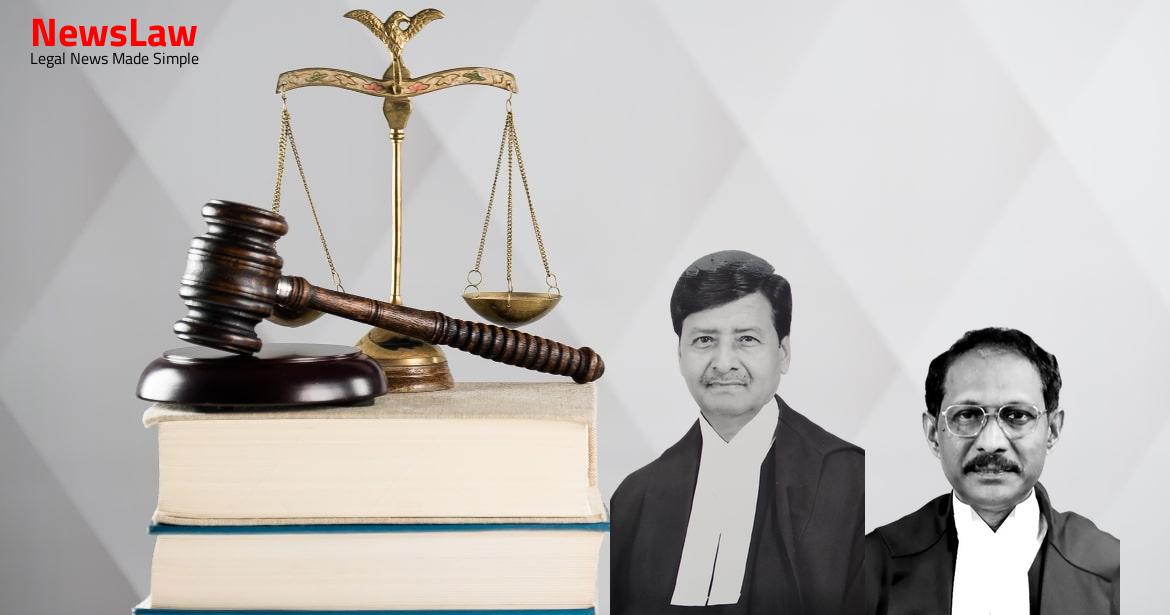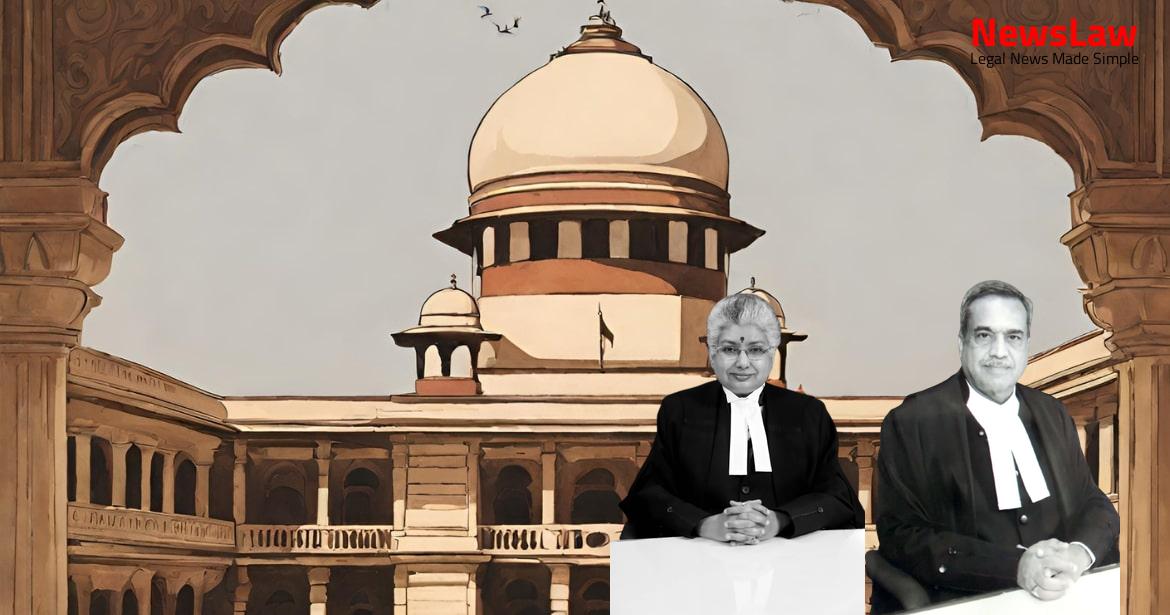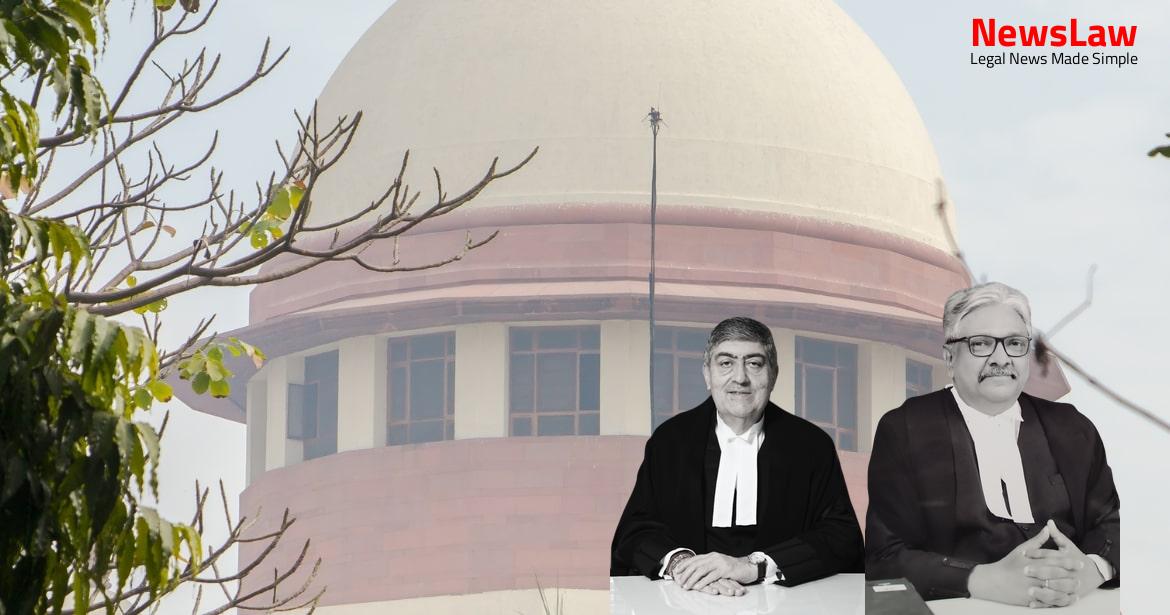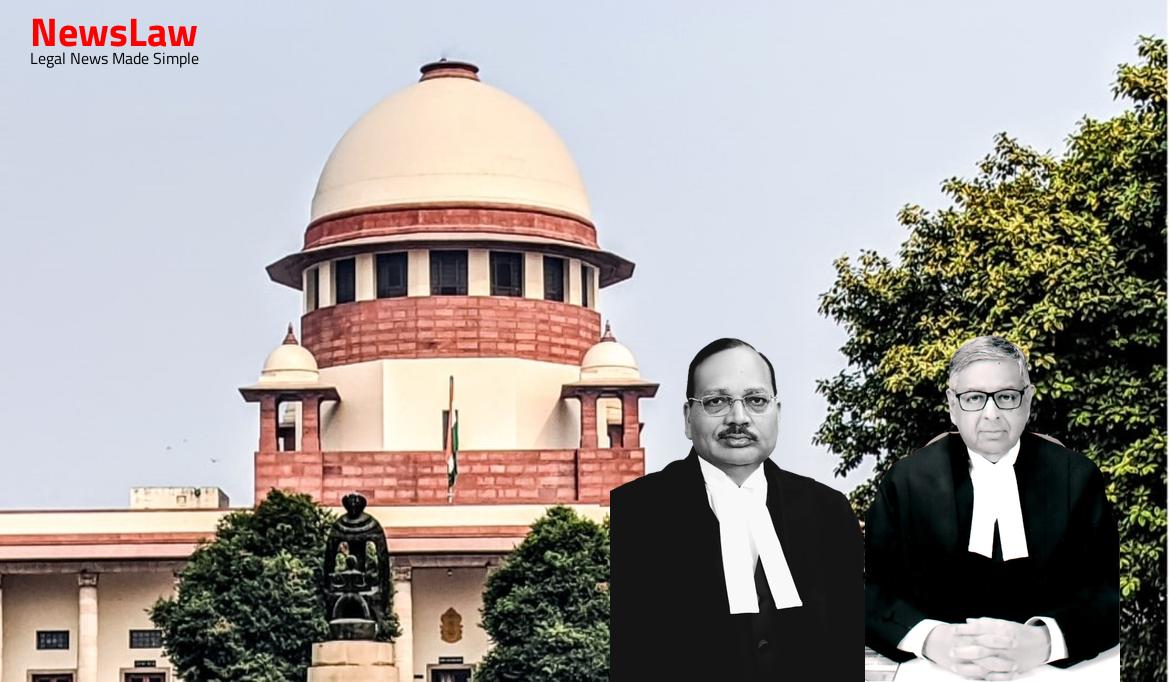Delve into the detailed legal analysis by the court in a recent case regarding vicarious liability in convictions related to an unlawful assembly. The case discusses the principles of abatement in appeals, the application of Section 149 of the Indian Penal Code, and the implications of the death of a convict during the appeal process. The court’s examination of constructive liability in achieving a common object despite changes in the composition of the assembly provides valuable insights for legal professionals.
Facts
- Offences under Sections 324/149 and 323/149 were made out against the appellants, leading to their conviction under those Sections.
- Seven of the accused persons, including the appellants, were convicted under Section 148, IPC, while three others were convicted under Section 147, IPC.
- The appeal filed by the surviving appellants was dismissed, and their convictions and sentences were confirmed.
- The appellants and eight others faced trial before the Additional Sessions Judge – III, Rampur, in Sessions Trial No.167/1981 for offences under Sections 302/149, 307/149, 147 and 148 of the Indian Penal Code.
- All of them were convicted under Section 302/149, IPC, and received different terms of imprisonment for the various Sections, with all sentences ordered to run concurrently.
- Thakur Singh and Chanan Singh were given ten acres of land in a sale deed, while the deceased received six acres in a separate deed.
- The dispute arose when Thakur Singh and Chanan Singh requested the deceased to cultivate on six acres to allow them to cultivate the rest.
- The incident involving the dispute led to the death of Dalip Singh.
- Injuries sustained by various individuals were detailed, including the deceased and his brothers.
- The appeals mainly focused on altering the conviction from Section 302 to Section 304 of the IPC.
- The prosecution detailed the involvement of the accused, including the weapons they carried during the altercation.
- Doctor’s testimony confirmed the cause of death as shock and hemorrhage due to injuries sufficient to cause death.
- Concurrent findings supported the prosecution’s claims regarding the unlawful assembly and the homicidal nature of Dalip Singh’s death.
- The specific actions of the accused, the aggressive nature of Thakur Singh and his group, and the dissatisfaction of the deceased were highlighted.
- The defense counsel sought to alter the conviction under Section 302 of the IPC to Section 304.
- The First Information Report was lodged by Shri Darshan Singh, outlining the involvement of the accused who were real brothers of the deceased.
- The purchase of sixteen acres of land by the siblings was a point of contention in the case.
- The appeal filed jointly by Gurmail Singh and Kewal Singh was affected by the latter’s death during the appeal process.
Also Read: From Nominee to Disqualified: Supreme Court Scrutinizes Age Evidence, Declares Election Invalid
Analysis
- The injuries sustained by PW-1 and PW-2, sons of the deceased, were significant, with the femur being broken into pieces.
- The evidence of PWs 1 and 2, supported by other witnesses, was deemed trustworthy by the courts below.
- The presence and participation of the appellant in the unlawful assembly were specifically mentioned by PWs 1 and 2.
- Multiple gunshot injuries were sustained by the deceased, with one shot causing extensive damage including breaking the femur bone into pieces.
- The ballistic evidence corroborated the fact that the appellant shot the deceased, despite a mismatch in the recovered bullet and gun.
- The abatement of the appeal due to the death of the appellant was discussed in the context of the sentence no longer being executable.
- The principle of common object in an unlawful assembly was analyzed, emphasizing the evidence from PWs 1 and 2.
- The vicarious liability under Section 149, IPC, was highlighted to establish culpability of the appellant.
- The impact of reduction in the number of convicts on the vicarious liability of the surviving convict was considered.
- The injuries sustained by the deceased and other witnesses were detailed, indicating the severity of the attack by the unlawful assembly.
- In criminal proceedings, abatement refers to the discontinuation of proceedings before conclusion, such as due to the death of the defendant.
- Presence in an unlawful assembly without disputing involvement is sufficient for conviction, even without direct participation in the crime.
- The term ‘abatement’ is not defined in Cr.P.C., so its meaning is derived from dictionaries. Black’s Law Dictionary defines it as discontinuation of criminal proceedings before conclusion.
- The principles of abatement in Section 394, Cr.P.C. were held to apply to appeals under Article 136 by the Supreme Court in relevant cases.
- Conviction for an offence does not require the recovery of the weapon used; reliable eyewitness testimonies can be sufficient evidence.
- The presence in an unlawful assembly with an active mind can lead to vicarious liability for the assembly’s acts.
- In cases of death of an appellant during appeal against a conviction, near relatives can apply to continue the appeal within thirty days to prevent abatement.
- Merely due to the death of convicts during the appeal process, provisions on vicarious liability for actions of an unlawful assembly remain applicable.
- Constructive/vicarious liability arises from the achievement of the common object by an unlawful assembly, even if some members die during the legal process.
- The offence of culpable homicide does not fall under either Section 304 (Part I) or Section 304 (Part II).
- The High Court was justified in dismissing the appellant’s appeal and confirming the conviction and sentences.
Decision
- This appeal lacks merit
- The appeal is dismissed
Also Read: Exemption from Enhanced Power Tariff: Withdrawal of Concession based on Date of Energisation
Case Title: GURMAIL SINGH Vs. THE STATE OF UTTAR PRADESH (2022 INSC 1097)
Case Number: Crl.A. No.-000965-000965 / 2018



